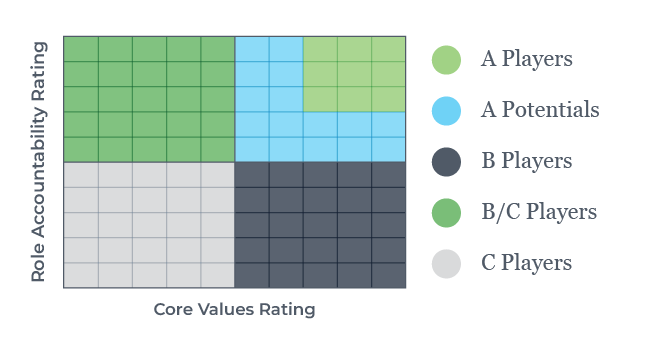Why People Decisions Are Culture Decisions
Role competency. Soft skills like problem-solving and communication. Experience. Growth potential.
These are all key factors to consider when bringing on new talent.
Say a candidate checks all these boxes. They have the experience, technical know-how, and interpersonal skills to fill the role… How can you be sure they’ll make the impact you’re looking for?
Make cultural alignment part of your hiring, onboarding, and promotion criteria.
The culture of a company is significantly influenced by who joins it, who thrives in it, and who leads it. Therefore, hiring, onboarding, and rewarding based on cultural fit is one of the strongest drivers of long-term cultural consistency. When these practices reinforce the right behaviors and mindsets, the culture starts to sustain itself. The people you bring in and promote become living examples of what the organization truly values.
Beyond hiring and promotion, monitoring cultural alignment should continue throughout the employee lifecycle. Embedding your organization’s core values into performance reviews helps ensure that alignment isn’t just assessed once, but continually reinforced. Recognizing and rewarding employees who consistently demonstrate those values signals to the entire team what an “A Player” looks like. This turns abstract ideals into everyday actions.

This is our Role Accountability and Core Values Matrix, a tool we use in our own performance reviews. You’ll notice that our core values sit at the base of the matrix, serving as the foundation for how we evaluate performance and ensure cultural alignment across the organization.
In short: People decisions should balance role performance and cultural fit. Cultural alignment can only be sustained if you select, develop, and recognize people who model it.
Questions to Assess Cultural Alignment in Hiring:
- Do interviewers intentionally assess for cultural alignment, not just skills and experience?
- Is the company’s purpose, values, and culture clearly communicated to candidates and new hires?
- Does onboarding help employees understand how the company’s purpose and values show up in daily work?
- Are promotions and recognition based on how results are achieved, not just what is achieved?
- Do employees see consistent examples of leaders and peers being recognized for behaviors that reflect the culture?
Action Steps to Strengthen Culture Through People Practices:
- Make values actionable by describing what they look like in practice.
- Integrate culture-based questions into hiring and interview processes.
- Make onboarding a cultural immersion by including leader visibility and value-driven examples and pairing new hires with mentors who embody the culture.
- Embed culture criteria into performance reviews and promotion decisions.
- Regularly share and reward examples of employees living the organization’s values.
Additional hiring and onboarding resources:
- 5 Tips for Attracting Top Talent and Growing Your Business
- Finding Employees Who Fit Your Culture
- How to Keep Top Talent From Leaving Your Company
- Martins, Andrew. “Why It’s Important New Hires Fit a Company’s Culture.” Business.com, 27 Nov. 2024.
When hiring, onboarding, and promotion practices align with your core values, you create a culture that doesn’t just exist on paper but thrives in action. By continuously monitoring and encouraging behaviors that reflect your values, you ensure that culture isn’t accidental. It’s intentional, consistent, and self-sustaining.
We’ve reached the end of our four-part blog series, The 4 Most Influential Drivers of Cultural Alignment. If you missed the first three posts, be sure to check them out. Cultural alignment plays a critical role in the overall health and strategy of your organization, and this series breaks down four key areas to focus on when building a unified, cohesive culture. Whether you’re a small team or a company spread across multiple locations.
Part 1 | Leadership Modeling: The Strongest Driver of Cultural Alignment
Part 2 | Clear and Consistent Purpose: Your Culture’s North Star
Part 3 | Frequent, Transparent Communication: The Engine of Trust
If you’d like to get leadership insights like this delivered straight to your inbox, subscribe to our monthly newsletter for leaders focused on growth, strategy, and culture.






